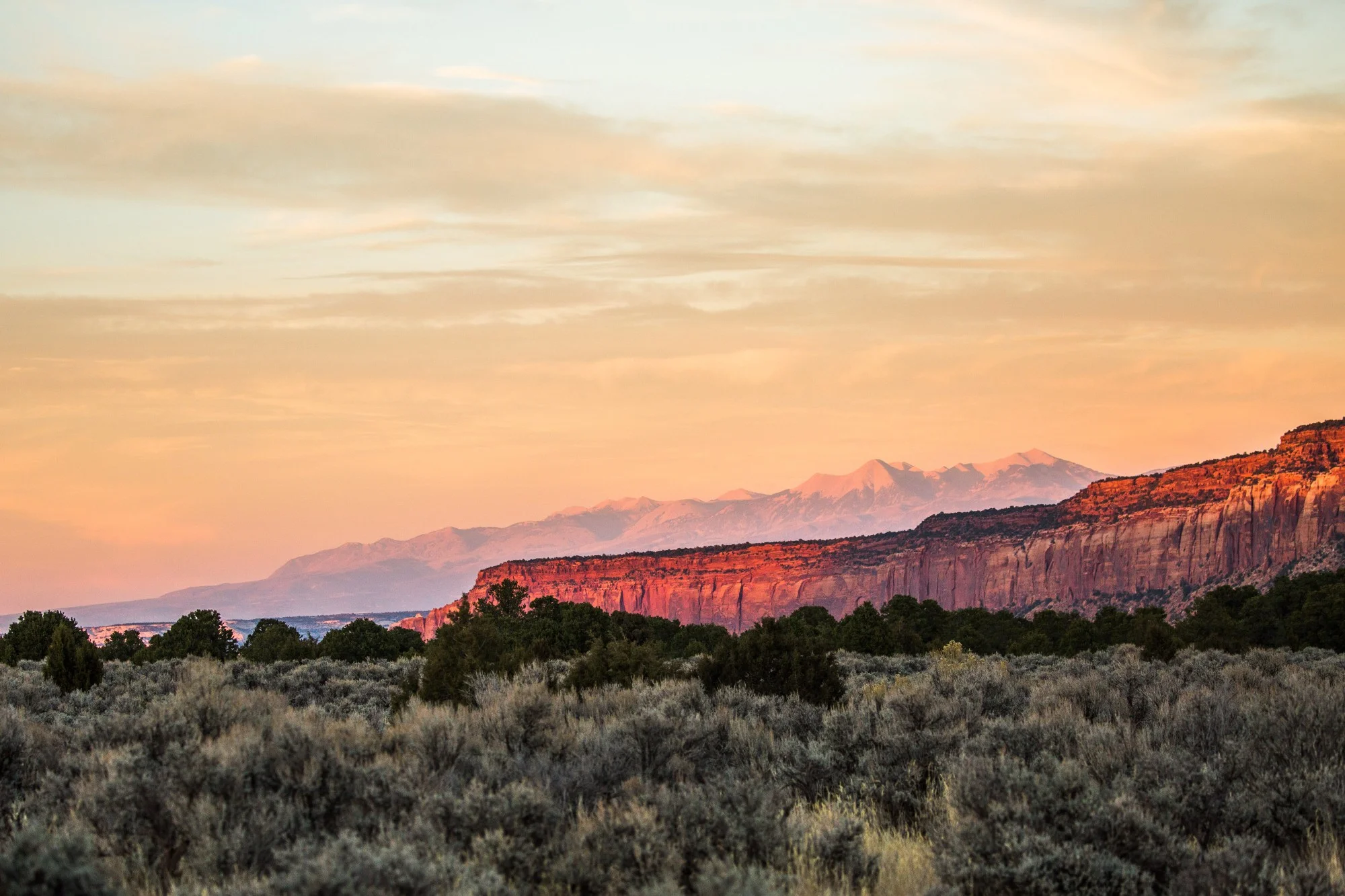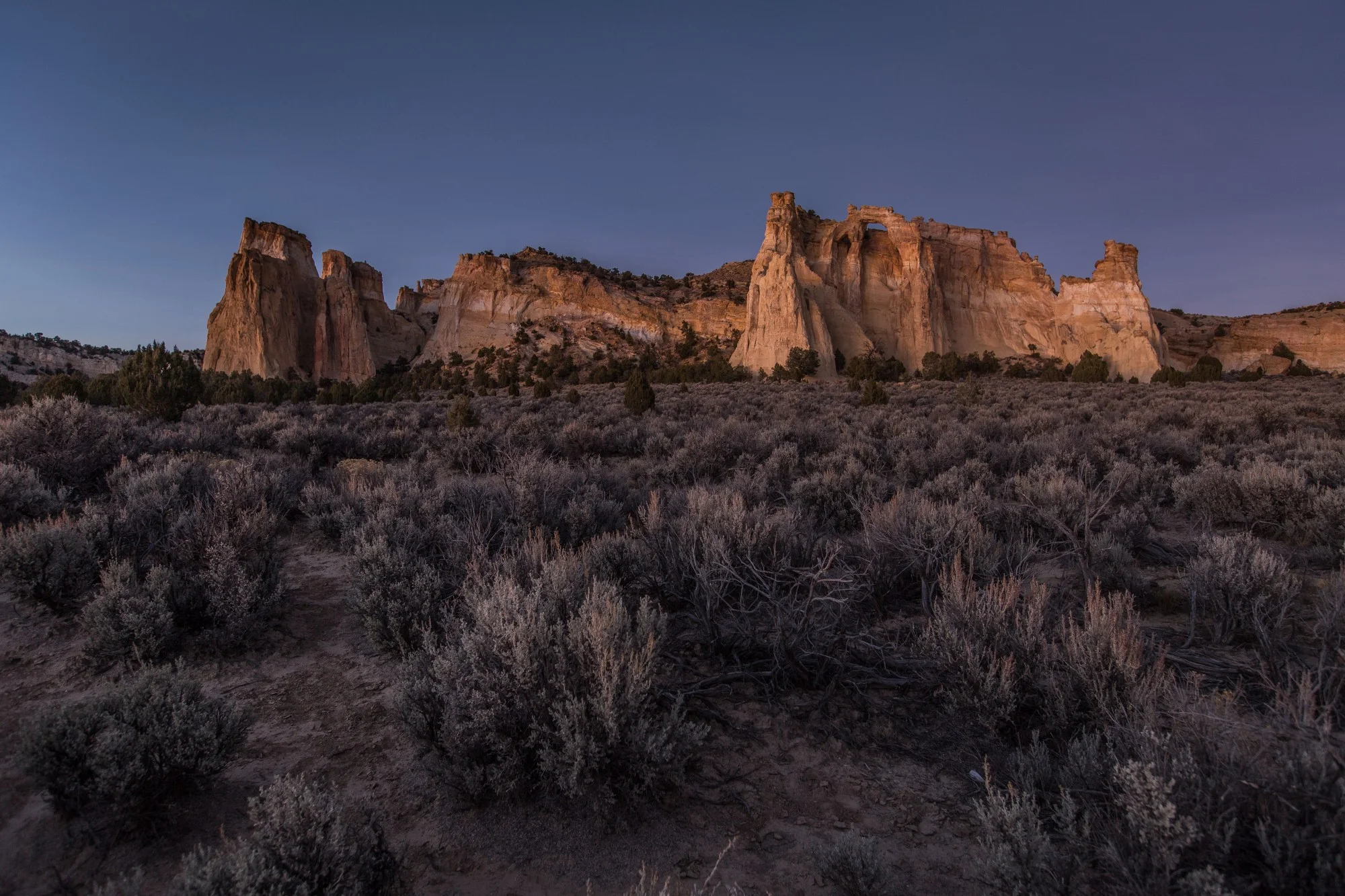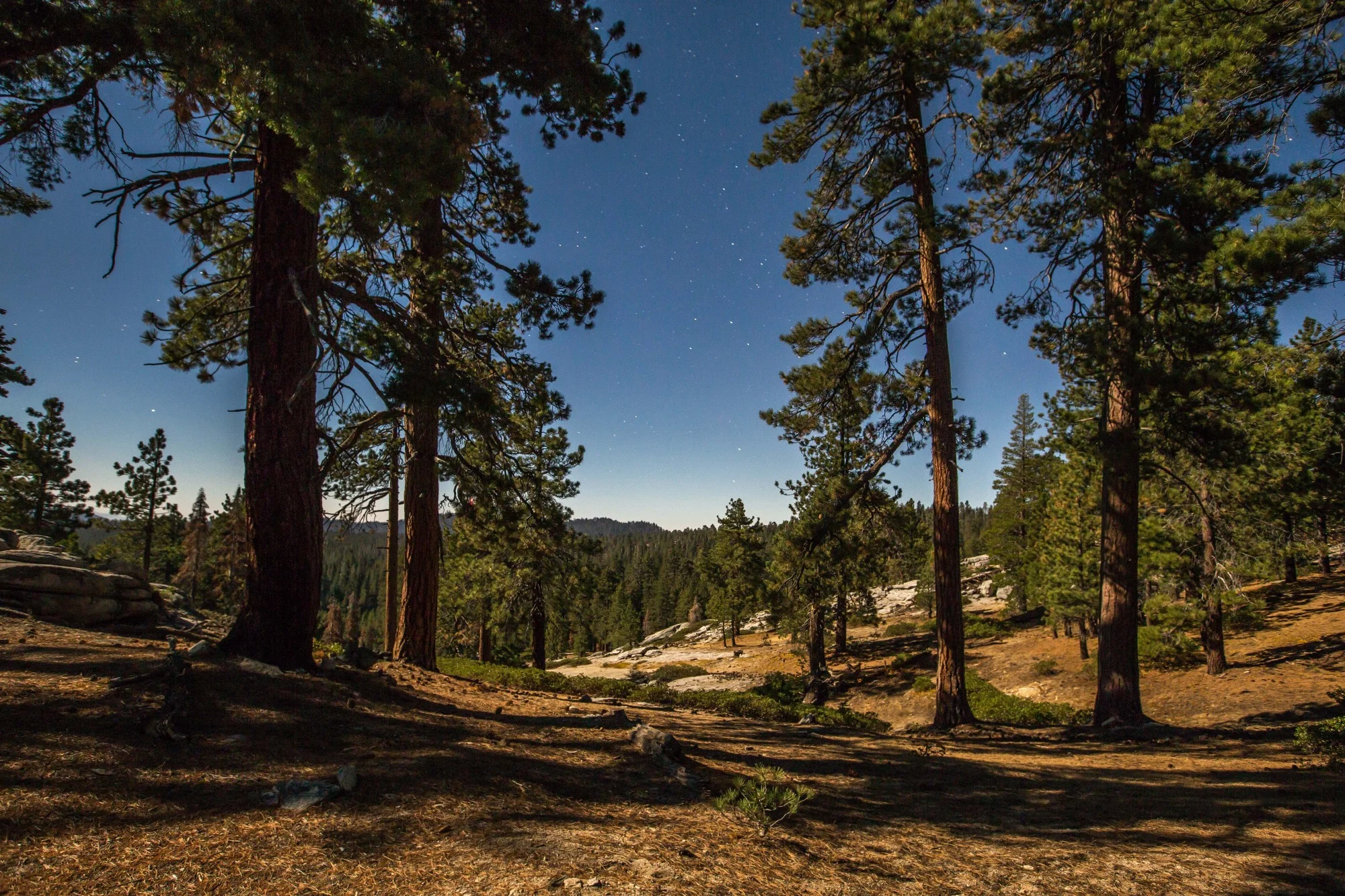GRAND STAIRCASE-ESCALANTE: A Case Study for Bear Ears
Text: Andreea Lotak; Photos: Justin Lotak · 10 min read
Grosvenor Arch at sunset in the Grand Staircase-Escalante National Monument
Visiting the Bears Ears region in 2017 was like traveling back in time to the counties of Kane and Garfield when Grand Staircase-Escalante was designated a national monument in 1996. What has changed there in these past two decades and what could be lost by the communities around Bears Ears?
On December 4, 2017, President Trump signed a historic declaration to carve out 46% of the size of the Grand Staircase-Escalante National Monument and 85% of Bears Ears. The relatively small, select crowd in the room cheered and applauded. Utah Sen. Orrin Hatch showed his gratitude for this presidential act and Secretary Zinke, who had recommended the cuts, was present at this gathering as well. In front of the State Capitol in Salt Lake City, a crowd of over 5,000 participants had chanted in support of keeping the monuments a few days before, and hundreds more gathered the day of Trump’s arrival. Many speakers and participants at the protests were representatives or leaders of regional Native tribes. This was all shortly after the creation of the Bears Ears National Monument in 2016, which was also a historic moment.
Five tribes formed a coalition to receive formal protections for this vast landscape where sacred lands and about 100,000 archaeological sites bear witness to the history of their ancestors — the Hopi Tribe, Navajo Nation, Ute Mountain Ute Tribe, Ute Indian Tribe and Zuni Tribe. In their pursuit they hit many walls in a region where ranching and the settler culture are prevalent among the positions of power. After years of numerous attempts to work with the San Juan County commissioners and state representatives to have a conservation area designated in Bears Ears, the plans of the Inter-tribal Coalition were met with a response in 2015: the Utah State Legislature designated a large area of Bears Ears as part of the ‘San Juan Energy Zone’ without consulting the tribal leaders. Meanwhile, east of Blanding and Monticello, gateway towns to Bears Ears National Monument, oil has been drilled for many decades. Yet, San Juan County has continually remained Utah’s poorest county in the state. Despite this fact, locals in Blanding and Monticello remain divided on the monument designated by President Obama, and many oppose the idea of having a large conservation area in their backyard.
In 1996, when President Clinton created the Grand Staircase-Escalante at 1.88 million acres, officials in the town of Kanab and in the Kane and Garfield counties wore black and ordered flags to be flown at half staff. Black balloons went up in the sky and many feelings were hurt. At the time, Sen. Orrin Hatch vowed to fight this “mother of all land grabs”, as he called it. It took him two decades for the time to be ripe for payback with the election of President Trump. Politicians and some of their constituents were mad that a large coal deposit was now locked in the national monument and Andalex Resources Inc, a coal company, was no longer able to start mining in one of the wildest areas of continental US. Even at that time, assessments were showing that it would be extremely costly and complicated to get that coal to market due to its remoteness, difficult terrain and lack of infrastructure.
In the meantime, Kane county has joined the ranks of the top five counties in Utah for economic growth and per capita income. Coal is becoming more redundant by the day, given historically low renewable energy and natural gas power prices. The county’s population has grown by 50%. In the years before the national monument, the population hadn’t grown almost at all since 1970. Most of this growth was due to migration, with the majority of new-comers in the 18–64 age group. Kanab has also become an attractive retiring community. The Leisure & Hospitality sectors, after the first decade of the national monument, were Kane county’s main job creators, and the trend was expected to continue in the next decade. According to a study by Headwaters Economics, within the whole Grand Staircase-Escalante region, jobs in the Services sector grew by 42% between 2001 and 2015. Currently, jobs in the tourism sector represent 40% of all private-sector jobs in Kane County, and 54% in Garfield County. All in all, tourism in Utah was an $8.4 billion industry in 2016, generated $1.23 billion in tax revenue and employed 144,000 people. The energy sector’s contribution — which is dominated by coal, gas and oil — is less than half that of the tourism sector in every aspect. Jobs in energy pay better than those in tourism, but overall the impact is much greater in the case of the latter, and the income distribution is more equitable.
We spent a couple of days in Kanab this fall to interview a local business owner and the President of the Board of Directors for the Grand Staircase-Escalante Partners. We met them at the Kanab Creek Bakery, which had delicious coffee and pastries that could rival those in France. It opened almost a year ago. Next door it shares space with a fine art photography gallery, and in its window a bright orange sign said: “Save Grand Staircase-Escalante”. Across the street from us was a pizzeria and beer garden, preparing for the weekend. It borrowed its name from a famous canyon in the national monument, the Peekaboo Canyon. They too seemed to have recently opened their doors to the public: “Peekaboo Canyon Wood Fired Kitchen is a welcoming eatery that is one of a new wave of restaurants transforming Kanab into a foodie hot spot”. Several hotels, including a boutique hotel, have recently popped up in town. The bakery was recommended to us by an outdoor shop and on the way there we passed an outfitter which offered tours in the region. The line at the bakery included locals and visitors, some speaking foreign languages. Kanab is finally embracing the character of a gateway community to the largest national monument in the Continental US. North of it, the smaller town of Escalante has a sign at the entrance which calls it the “Heart of the Grand Staircase-Escalante National Monument”.
The economy of this entire region took off slowly after the monument was designated and has undergone a boom in the past six years, according to the people we interviewed. This boom led to an identity transformation, with a majority of people now embracing the opportunities created by the monument and by the growing interest in outdoor recreation. Both residents to the area and the people of Utah as a whole voted in numerous polls to maintain this national monument ‘as is’; Bears Ears National Monument, created in 2016, in a way is now the new Grand Staircase-Escalante. Local polls keep showing numbers nearing a 50–50 division on the issue of rescinding the monument. Little more than half want it reduced in size. At the Visitor’s Center in Blanding, outside Bears Ears, a volunteer worker whose opinion on the monument leaned towards opposing it, admitted that visitation grew by some 40% in these past months since the region made the news around the country and the world as the poster-child for the crusade against national monuments. South of Blanding, the small town of Bluff is officially proud of being a gateway to Bears Ears, and its economy is already poised to take advantage of this designation: lodges, pretty motels, a farm-to-table café and restaurant, and outfitter shops. Both Blanding and Monticello looked like towns in desperate need of more economic opportunities. When you go across the border to Cortez, CO, the difference is stark. The town is a gateway to the Mesa Verde National Park, and to the Hovenweep and Canyons of the Ancients national monuments. Tourism plays an essential role in the economy and livability, which in turn attracts valuable talent and investment for other industries. Although with a larger population, it much rather resembled Kanab than it did Blanding.
Grand Staircase-Escalante was the first national monument managed by the Bureau of Land Management (BLM). Until then federal lands designated as national monuments passed to the National Park Service (NPS). This usually meant that infrastructure and facilities were built and more restrictive land use policies were implemented. With BLM becoming a conservation steward, a new era began for a different kind of national monument. Their model was a more collaborative one, of involving local stakeholders in the management plan in order to respect the multiple land use traditions. Additionally, the BLM monuments remained wilder, on less developed lands. Roads are maintained but mostly unpaved, signs are put up, trails are created or marked, parking lots get restrooms and picnic tables, but little else is added. All tourism facilities are left to the communities around the national monument. This way the land maintains a more natural state, visitation to it doesn’t explode, and the economic benefits from tourists go to the gateway towns and local businesses.
The local politicians in Blanding and Monticello can look over at the Grand Staircase-Escalante region to see how their communities could look like in the future if Bears Ears stays. They wouldn’t even have to invest money to bring visitors here because businesses like Patagonia and organizations like The Wilderness Society have put together so much material to promote Bears Ears that it could last a lifetime. But, even with numbers, there are many ways to look at an issue. Numbers can be twisted and turned to reflect only the negatives. Even if a majority of residents now want the monument and if the economy is going through a boom, Grand Staircase-Escalante itself is being partially erased. This new-found economic growth for the many isn’t enough to appease the national and local interests of the few.
Sunset over Bears Ears in the Manti-La Sal National Forest, seen from between the two iconic buttes that gave the name of the national monument.
Even if President Trump’s decision regarding the two national monuments was made, many organizations have already sued and the courts and potentially Congress will get involved in this issue. This is the best time to support groups like the Grand Staircase Escalante Partners, and the Bears Ears Inter-Tribal Coalition, Utah Diné Bikéyah, and Friends of Cedar Mesa for Bears Ears National Monument. You can also start calling your senators and representatives to let them know of your support for these two national monuments and for the Antiquities Act.






















To date, President Joe Biden has designated five national monuments since coming to office in 2021. Here we take a look at four of those five national monuments that had a land conservation element, and what might be on the slate before the end of his first term.